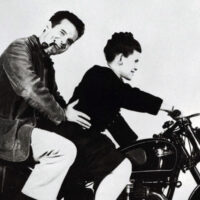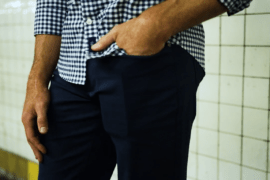Dave Petrillo and Dave Jackson made waves with the Coffee Joulies; and now their new sensation – Booze Joulies – keeps alcohol cold without watering it down is creating quite a literal stir. According to the team, a few Booze Joulies in a glass of room temperature scotch gives “medium chill without the flavors becoming muted.”
The original Coffee Joulies were invented by two former neighbors and classmates from Pennington, New Jersey who developed the product from opposite US coasts for over 8 months. The “two Daves” (Dave Jackson & Dave Petrillo), engineered, prototyped, and hand-produced their first run of Coffee Joulies that became a runaway Kickstarter success – raising over $300,000 with an original campaign goal of just $9,500.
Since then, the two ended up winning the Grand Prize in the Shopify Build a Business Competition, which featured a cash prize of $100,000 and expert advice from business and marketing icons Seth Godin and Gary Vaynerchuk in New York City. Additionally, the two Daves were featured on an episode of the popular television show Shark Tank where they landed a successful business deal with four of the five sharks.

Moving from the hot Coffee Joulies to cold Booze Joulies, the materials used for the Booze Joulies is the very same stainless steel shells. A set of six Booze Joulies costs $29.95 and comes with its own unique carrying pouch. We caught up with Dave Petrillo and asked him a few questions, and this is what he had to say …
SS: What inspired you to take the Coffee Joulies to the next level with the Booze Joulies?
DP: I was tired of burning my mouth on hot coffee. If you have ever been frustrated with the temperature of your coffee, you know what I’m talking about. If you want coffee to stay hot, you can use a travel mug. Good mugs can keep coffee hot for a long time. The problem is that at the beginning the coffee is scalding hot and stays that way for too long. You have to do something to cool it off, or just wait. Either way the process can be tedious before you’ve had your morning fix. Using phase change materials to regulate the temperature of the coffee is good because it will absorb heat up to a certain temperature, and then release it after that. The phase change material does the thinking for you. No more guess work early in the morning. I needed to figure out how to use phase change material in my morning coffee and Joulies was the result.

SS: What is the key innovation in the process of construction?
DP: The phase change material was actually not that difficult to find. One of the hardest parts to making this project was getting the manufacturing of the rest of the stainless steel shell made in the USA. Forming and joining and sealing these beans shut so that they last a long time is definitely a difficult task. Much harder than we anticipated.

SS: What was the biggest challenge that you faced?
DP: Getting the manufacturing and quality control of these beans sorted out was definitely a large hurtle. Being engineers we took a very hands on approach and helped our manufacturing partners all throughout the way in order to make sure things went smoothly. Ultimately it took more than 8 months of trial and error to be in a comfortable spot, production wise.
SS: Can you explain a bit more in detail about the design process?
DP: The design aspect, like the shape of the bean, was done by me in a few hours sitting in front of my computer with CAD open, a single coffee bean, and a pair of calipers in my hands. After the model was made, I made some tooling with a local machine shop out of oak, and later O1 steel. These were used to make copper prototypes of the beans which we sealed by hand in order to test out.


SS: Can you share details regarding the software, machining/prototyping tools, what kinds of sketches/prototypes/mockups were made, what kinds of challenges you faced?
DP: I used the CAD software that I was familiar with from my time working as an engineer. We didn’t actually 3D print anything, although it would have been nice. In 2011 I was printing things every day for work, but didn’t have access to one for personal use. The most challenging parts were figuring out how to make functional prototypes (beyond the scope of 3D printing, even today.) I used a lot of jewelry making equipment and techniques from jewelry textbooks. It might have had an influence on the name of the product, Coffee Joulies.
Find out more about both the Coffee Joulies and Booze Joulies over at Joulies.com.






